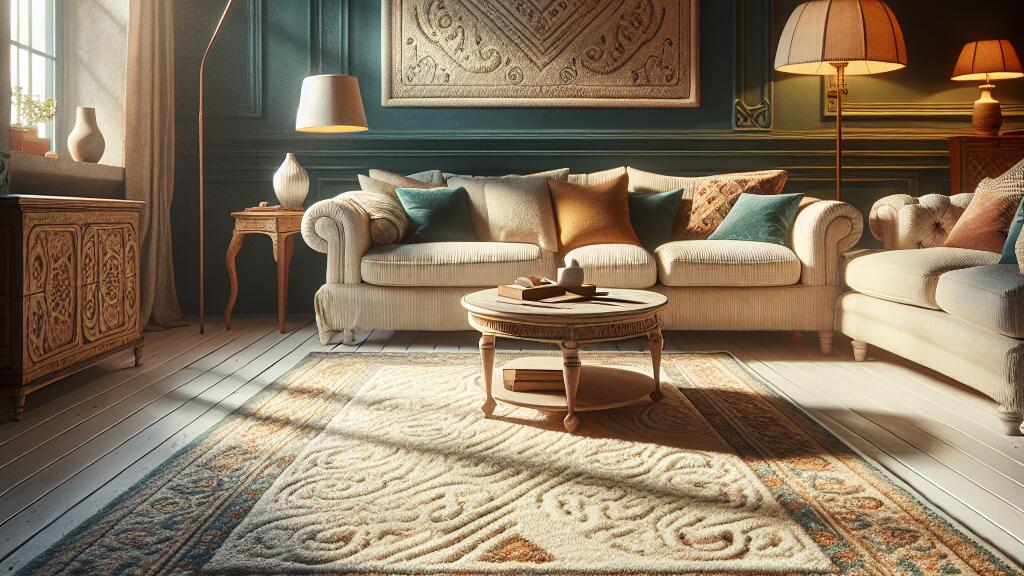
Table Of Contents
Price Considerations
When considering Berber carpet, price is a significant factor for many consumers. The initial cost tends to be higher compared to other carpeting options. This can be attributed to the quality of materials used and the weaving process that creates the distinctive texture. A homeowner may find that budget constraints limit their choices, especially if they desire a more durable version that can withstand heavy foot traffic.
Additionally, the price often reflects the long-term investment potential. While the upfront expenditure is steep, the durability of Berber carpet can lead to fewer replacements over the years. This longevity can offset costs related to ongoing maintenance and early replacement with other types of carpets. However, it is essential to evaluate the full scope of expenses, including installation and any necessary underlayments, which can further impact overall budgeting.
Click here for additional info.
Higher Initial Investment
Investing in Berber carpet often comes with a notable price tag. The unique materials and manufacturing processes involved contribute to this higher cost. Homeowners may find themselves spending more upfront compared to other carpeting options. This initial investment can impact budgeting, particularly for larger spaces or those requiring extensive flooring.
While the high price may deter some buyers, it is essential to consider long-term value. Berber carpets can be durable and long-lasting when properly maintained, potentially offsetting the initial expense over time. However, for those on a tight budget, the higher initial cost can present a significant barrier, prompting a closer examination of alternatives in the market.
Allergens and Dust Accumulation
Carpets with a textured surface, like Berber, can inadvertently create an environment conducive to the accumulation of allergens. The loops tend to trap dust, pet dander, and pollen, making it challenging to maintain a clean indoor atmosphere. Regular vacuuming may not suffice to eliminate all trapped particles. As a result, individuals with allergies or respiratory issues may experience heightened discomfort in spaces with Berber carpeting.
The dense material of Berber carpets further complicates the cleaning process. Stains and spills can lead to mold growth if not addressed promptly. This characteristic necessitates frequent and thorough cleaning, which can be time-consuming and may require professional services for deep cleaning. Homeowners must invest time and effort into maintaining the health of their indoor environment when they choose this type of carpet.
Tendency to Trap Dirt and Debris
Berber carpet's loop pile construction can create an inviting texture and aesthetic appeal. However, this design also tends to trap dirt, dust, and other debris within its fibers, making maintenance a challenge. The tighter weave and low profile may seem like a benefit, yet these features can contribute to particles settling deep into the carpet, where regular vacuuming often struggles to reach.
The accumulation of allergens and particles can lead to a less hygienic environment, especially for allergy sufferers. It may require more frequent deep cleaning or professional interventions to maintain cleanliness. Homeowners should be prepared for the added effort involved in keeping a Berber carpet looking fresh and presentable over time.
Installation Complications
Proper fitting of Berber carpet requires meticulous attention to detail. The unique looped construction can be more challenging to install compared to traditional carpet styles. An inexperienced installer may encounter difficulties with seams, especially when matching patterns or aligning the loops. Precision is crucial to avoid uneven surfaces that can lead to discomfort and premature wear.
Additionally, the carpet's thickness and density may demand specific equipment and techniques for optimal installation. Standard adhesive might not provide the necessary grip, necessitating specialized bonding options. These factors contribute to a more complicated installation process, often increasing labor costs and time. Homeowners should ensure that the chosen installer is well-versed in Berber carpets to achieve the best outcome.
Specific Requirements for Proper Fitting
Fitting Berber carpet requires careful preparation and specific techniques. The unique looped texture of the carpet can be more challenging to install compared to other types of flooring. Professional installation is often recommended to ensure a seamless fit and avoid wrinkling or bunching. Additionally, using the right type of padding is crucial to maintain the shape and integrity of the carpet over time.
The substrate beneath the carpet needs to be smooth and level to enhance durability. Uneven surfaces can lead to premature wear or damage. Special attention should be given to the seams, as improper alignment may become apparent over time. Understanding these specific fitting requirements is essential for achieving the best results and longevity of Berber carpet in any space.
FAQS
What are the primary disadvantages of Berber carpet?
The primary disadvantages of Berber carpet include a higher initial investment, the tendency to trap allergens and dirt, and specific installation requirements that may complicate the fitting process.
Why is Berber carpet considered a higher initial investment?
Berber carpet typically costs more upfront compared to other carpeting options due to its durable materials and complex manufacturing process, which can result in a higher quality product.
How does Berber carpet trap allergens and dust?
The looped construction of Berber carpet can create an environment where dirt, dust, and allergens become trapped within the fibers, making it challenging to maintain a clean and healthy indoor atmosphere.
Are there any specific installation complications associated with Berber carpet?
Yes, Berber carpet requires specific fitting techniques and tools due to its unique texture and construction, which can lead to complications during installation if not handled by an experienced professional.
What maintenance practices can help mitigate the disadvantages of Berber carpet?
Regular vacuuming, professional deep cleaning, and using a carpet pad can help reduce allergens and dirt accumulation, as well as prolong the lifespan of Berber carpet.